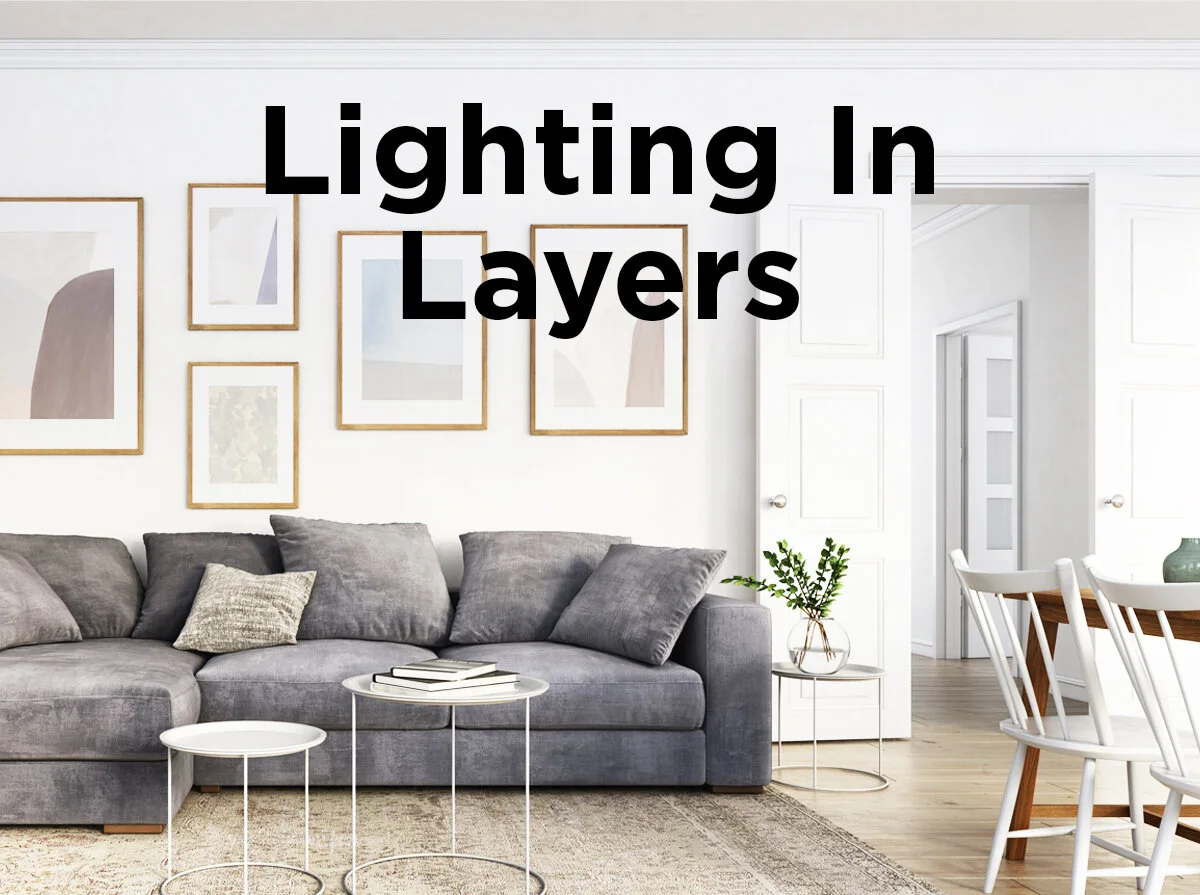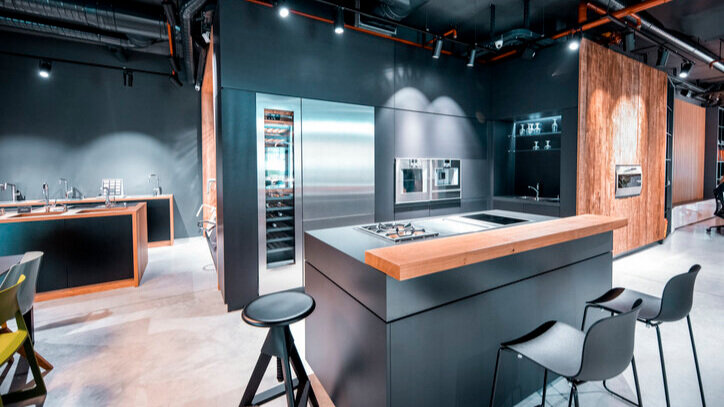Lighting In Layers: Home Interior Lighting Design
Layering the light in the rooms of your home is a bit like making lasagna. What is the sauce without the noodles? And cheese just makes everything better. You also can’t go without your protein. Each ingredient—the sauce, noodles, cheese, and meat (or veggies)—is merely acceptable by itself but together, each layer of flavor aids in creating the savory taste of the whole dish. Similarly, lighting in layers can remove unwanted shadows and increase the quality of your home’s lighting. The lighting you chose to brighten your interiors can define and elevate your décor and overall ambience.
Terms To Know
Before you light a room worthy of Good Housekeeping, you will need to know the three general lighting layers.
Ambient lighting (sometimes called general lighting) is the most inclusive layer of light. This layer is big and covers large areas. You set the tone for the level of light you desire with ambient light. When ambient light is involved, the ceiling is the best place to start since the light sources are typically meant to provide overhead lighting. Some examples of light fixtures include semi-flush/flush mount fixtures, chandeliers, and ceiling fans with built-in fixtures. You can learn more about how to pick the right ceiling fan with our ceiling fan buying guide or choose the right light fixture to match your style by viewing our In Focus series on decorative lighting.
Task Lighting is just what it implies, direct lighting for detail-based activities, i.e. a task. Cooking, reading, applying makeup, or pursuing your love of building miniatures are all tasks that require adequate, if not specific lighting to accomplish. The light should remove distracting shadows and be glare-free, as well as bright enough to prevent eyestrain. Task lighting is the realm of desk lamps, pendants, work lights, or vanity and under cabinet lighting.
Accent Lighting is the fun layer. Where ambient light is broad and mainly comprehensive, the accent layer is small and purposefully selective. A good accent light adds drama and dynamics to the room. You can use fixtures like track lights, recessed can lights, and wall sconces to spotlight or highlight your favorite part of a space like artwork, a fireplace, or your massive sci-fi DVD collection. According to “Lighting Your Life” from the American Lighting Association (ALA), accent lighting is most effective when the light creating the focal point is three times as bright as the surrounding space. Accent lights also act as secondary light sources to chase away the gloom and fill in the places where ambient light can’t reach. Other forms of accent lighting include rope light and strip lighting, which can be easily manipulated to fit the more unusual shapes of vanity mirrors, crown molding, stairs, or under shelving.
Questions To Ask Yourself
Now that you know the types of layers for your light, you need to know the right questions to ask. You can consult a lighting designer to find appropriate light fixtures to match your tastes and budget. You will need some kind of task lighting in almost every space of your home, with ambient and accent lighting covering the rest of the room. Even if you choose to conduct the search and installation yourself or before a visit from the designer, take some time to consider your answers to questions about lifestyle, preferences, practicality, and color scheme when planning your light design.
Lifestyle. What is the purpose of the room? What activities or tasks do you need to accomplish while you are in there? Are you cooking or watching movies? Doing laundry or doing homework? You need to see clearly if you have any hope of completely that dreaded calculus assignment, or worse, your taxes. But you wouldn’t want that much bright light in the den while watching TV or trying to unwind. Evaluating your daily habits and possible projects will ensure you plan the proper amount of light for your room.
Preferences. What features do you love about the room and is it something you want to highlight? For example, some people may choose to focus accent lights on their textured walls or built-in bookcase, while others direct visitors’ eyes toward fireplace mantels or family photos. Think about what kinds of light fixtures you do and don’t like. If you shun chandeliers or find wall sconces to be old-fashioned, then install recessed can lights or modern track lighting instead. Fixtures finishes and styles should be examined; there is no sense in being stuck with light you hate.
Practicality. Is this a remodel or a newly constructed room? With new construction, it’s easier to build the light design into the architecture. This idea holds true for major lighting remodels as well. If it becomes a large scale project, you may save yourself a headache by replacing the whole ceiling and the lighting in one project. When remodeling, identify where all the existing wiring and electrical outlets are. Many newly constructed houses already include some recessed lighting, so a remodel could only involve replacing or adding a few key fixtures.
Color Scheme. What kind of mood do you want to create? Cozy and warm or bright and airy? The color temperature and the lumen output of the bulbs you choose can transform the color of your room from sunny beams of daylight to the intimate glow of the fireplace. Remember that darker colors absorb more light, which means you will need to increase the intensity or number of lights in rooms with darker paint or furniture finishes.
After you’ve taken a long, thoughtful look at your lighting, you can begin to form a plan for each room. In our article How Many Lumens Do I Need?, we recommend 20 lumens (i.e. brightness) per one square foot of floor space, 30 lumens per square foot for tables and raised surfaces, and 50 lumens per square foot for desks and task lighting. Beginning with the ambient light layer, multiply the square footage of your room by 20 to give you an estimated lumen output for the general area. Follow the same formula for the square footage of raised surfaces like dining room tables and task lighting.
It’s a good idea to install dimmers in every room to control the light levels for special occasions and the time of day. Try warmer, dimmer lights in your bedroom for the optimum snooze-fest and reserve your task lighting for bedside tables and the closet or dressing areas. Your vanity mirror will need the most light for picture-perfect makeup but don’t neglect to plan a well-lit bathroom and avoid mishaps in the shower. A hallway of photos may have the brightest lights aimed at the ready-made gallery. The dining room table is considered the focal point of a meal, the ideal place for a chandelier, and indirect light can cast a muted shine on everything else. Although brilliant overall lighting is the norm, under cabinet lighting is the champion of kitchen countertops while pendants prevail over islands and breakfast nooks. A home office isn’t complete without a desk lamp and lighting your stairways (from top to bottom with controls on either end) can save you many, many stubbed toes. There are more rooms and ways to light them than I could write about in just one post yet every space deserves a logical and observant lighting plan.
If you want to brag about your newfound confidence in layering light, ask for recommendations on stub-free lighting installations, or offer advice on luminaires for particularly tricky ceiling designs, please leave a comment in the area below. You can also type your favorite room into the search bar at the top for more lighting tips and advice tailored to your space. Don’t forget to visit our Facebook, Twitter, LinkedIn, or Pinterest for even more DIY projects and quirky lighting news. The down-to-earth staff of 1000Bulbs.com would like to say that despite economical energy concerns and unlike Motel 6, we will indeed “leave the light on for you.”
Sources
HGTV, What To Consider in Lighting Projects
Real Simple, Expert Interior Lighting Tips
American Lighting Association, Lighting Your Life









